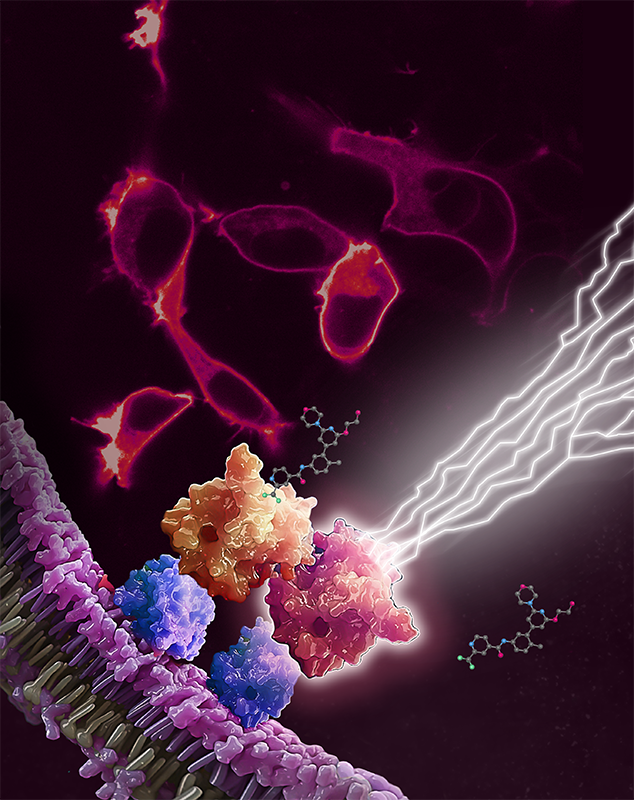This winter, norovirus outbreaks surged across the U.S., with cases nearly doubling from last year, according to the CDC. Schools, cruise ships, nursing homes and healthcare facilities saw widespread illness, underscoring the urgent need for a norovirus vaccine.
Each year, norovirus causes 685 million infections worldwide and is the leading cause of foodborne illness in the U.S., responsible for 21 million cases annually. Despite its massive impact, there is still no approved vaccine—but recent advancements suggest that this could change.
Author: Sara Christenson
Cracking the Undruggable Code: Top 10 Key Takeaways
For decades, the concept of “undruggable” targets has presented one of the most significant challenges in drug discovery. At our recent virtual event, Illuminating New Frontiers: Cracking the Undruggable Code, leading researchers and industry experts gathered to showcase cutting-edge technologies and fresh perspectives that are expanding the boundaries of therapeutic development. Over three engaging days, participants explored groundbreaking advances in targeting RAS signaling, leveraging protein degradation and induced proximity strategies, and exploring RNA as a therapeutic target.

An Introduction to Lyophilization: Process, Benefits & Possibilities

Lyophilization is a process designed to remove water from a sample or product through a controlled freezing and vacuum application. The method leverages the triple point of water, where solid, liquid, and gas phases coexist under specific temperature and pressure conditions. The result is a room temperature stable product that is much lighter than the original sample or product.
Continue reading “An Introduction to Lyophilization: Process, Benefits & Possibilities”COVID-19 and Type 1 Diabetes: Exploring the Potential Link
Prior to the COVID-19 pandemic, the incidence of adolescent type 1 diabetes was steadily increasing at a rate of 1.9% per year in the United States and 3-4% per year in European countries (3,7). Since the pandemic, however, several studies have reported an unprecedented surge in type 1 diabetes in children and teenagers.
Continue reading “COVID-19 and Type 1 Diabetes: Exploring the Potential Link”LinkedIn for Early Career Scientists: Advice from Promega’s Interns

In today’s world of social networking, LinkedIn has emerged as the clear winner for professionals in all industries. With its powerful networking capabilities and innovative career development features, LinkedIn has revolutionized how individuals connect, collaborate and advance their careers.
In this blog you will hear from some of Promega’s interns as they share valuable advice for early career scientists looking to expand their network, establish meaningful connections and propel their career forward.
Continue reading “LinkedIn for Early Career Scientists: Advice from Promega’s Interns”Leveraging LinkedIn: A Guide for Early Career Scientists

As an early career scientist, you may have already realized that the key to a successful career is not just an impressive resume or CV, but a strong professional network. In today’s interconnected digital age, there is no better platform to build this network than LinkedIn. With more than 930 million users worldwide, LinkedIn is a powerful tool for connecting with professionals in your industry, exploring job opportunities, and building your personal brand.
In this blog, I’ll cover everything you need to know to establish a strong presence on LinkedIn and achieve your professional goals.
Creating a Strong Profile
Your profile can either make or break your success on LinkedIn. A well-crafted profile has the potential to create lasting impressions and open doors to new career and networking opportunities. Below are a few tips to help you create a profile that is sure to impress potential connections and employers:
Continue reading “Leveraging LinkedIn: A Guide for Early Career Scientists”Cancer Preventing Vaccines: Unleashing the Potential of Tumor Antigens

It has been more than 100 years since Dr. William B. Coley, known today as the “Father of Immunotherapy,” made the first recorded attempt to mobilize the immune system as a means of treating cancer (9). Decades later, the discovery of T cells and the vital role they play in the immune system set the groundwork for many new immunotherapy treatments, such as those involving monoclonal antibodies, cytokines, CAR T cells, and checkpoint inhibitors.
Continue reading “Cancer Preventing Vaccines: Unleashing the Potential of Tumor Antigens”